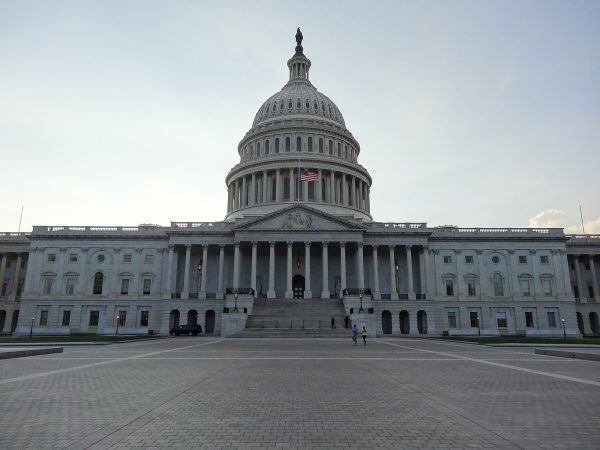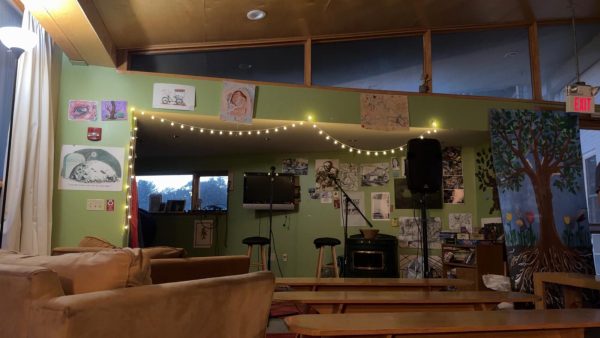Mobile Journalism Scholar Traces History of Black Witnessing
The founder of a pioneering cell phone-based journalism initiative connected contemporary uses of devices by Black users to historical efforts to document racist acts in this year’s Morgan Lecture.
According to the college website, the Morgan Lectureship is used by the college president “for the procurement of one or more special lectures annually upon such subject or subjects as he may deem wise…” The chosen lecturer is invited to campus for three to five days to meet with individuals and class groups and deliver a lecture on a topic related to the social sciences or humanities.
Dr. Allissa V. Richardson delivered the talk, titled “Bearing Witness While Black: African Americans, Smartphones, and the Fight to Preserve our Democracy—One Video at a Time,” on Feb. 3rd. The event was streamed online through the Clarke Forum for Contemporary Issues.
Richardson opened with a story from her journalism classroom at the University of Maryland 2015, when her students entered with news of an uprising in Baltimore for the death of Freddie Gray. She went out into the streets with the class to capture the event and speak to participants.
A run-in with Devin Allen, whose cell phone photography at protests would go on to be featured on TIME magazine covers in 2015 and 2020, sparked Richardson’s interest. She wondered “how we should be communicating how journalism has always sought to preserve democracy, and specifically, how African Americans’ practicing of it pushed the boundaries of what democracy has promised, always questioning—’where are the rights that you said that these documents were supposed to give us?’”
It was not the first time Richardson had been interested in the intersection of technology, journalism, and democratic issues. In 2010, she launched the first Mobile Journalism (or MOJO) Lab at Morgan State University after her students’ camera equipment was frequently stolen as they went out to report. Richardson explained that making use of the technology embedded in students’ personal devices made journalism more inviting, and it showed them how to report real-time news without a connection to a major outlet. She was invited to take the lab around the world to locations like Morocco during the Arab Spring and South Africa.
Later, starting a doctorate at the University of Maryland in 2014 and searching for a topic of focus, Richardson was startled by the investigative work done with community members using cell phones in Ferguson, Missouri after the shooting of Michael Brown.
“This was no longer looking for holes in the scholarship and figuring out what I might write about. This was real time, and I was seeing activists…who were out there with cameras, and in many cases debunking a lot of the things I was seeing on cable,” said Richardson. “I felt such a profound disappointment that I had to find out about the true events that led up to Ferguson on Twitter, not from my colleagues in the field.”
This resonated with Frances Taylor ‘22, who attended the lecture. She recalled Ferguson being portrayed as an “anarchist jurisdiction” in mainstream media, while “people [on Twitter] said that ‘it’s alright.’”
“You kind of think of journalism as this objective, impartial thing in the context of democracy, but the reality is to be black in America cannot be represented by white journalists yet…at this point in time,” Taylor commented.
Richardson, seeking to show how Black citizens with cell phones had outpaced the work of traditional outlets, traced a historical phenomenon of “Black witnessing.” Explaining her scholarship, she noted that throughout American history, Black Americans have used “sousveillance”, or ground-level observation, and news wires—from the press to contemporary platforms like the Black Twitter community—to quickly convey events.
Richardson then outlined three historical periods of Black witnessing and the figures and media associated with them: slavery, recorded by Fredrick Douglass; lynching, captured by investigator Ida B. Wells’s “Red Record”; and the Civil Rights Movement, which drew attention to its cause through nightly broadcasts. She closed with a critical examination of media coverage of June 2020’s protests against police brutality.
This portion was especially informative for viewer Kat Pham ‘21. “With smartphones and social media, the act of recording or witnessing has become easier and more accessible to the general public, but it is worth mentioning that this is not the first time such an action was taken,” Pham wrote. “In paying tribute to those who did the witnessing in the past without the advanced technology of today, we humble ourselves and recognize that the fight has been long and it should end soon (some people would even say that justice is long overdue).”
Nhi Ly ’22 praised Richardson’s lecture as “robust,” believing it touched on a “crucial topic.”
“I think the talk…allowed us listeners to become critical as the recipients of news and information and to reimagine what journalism is and how journalism can operate in various forms beyond its traditional perception,” Ly wrote.




